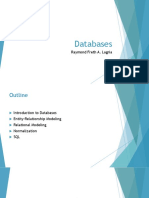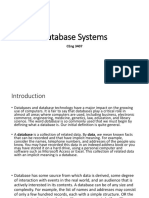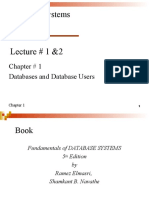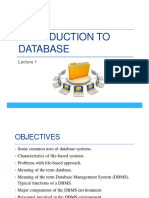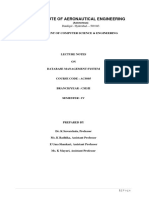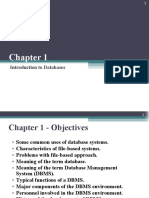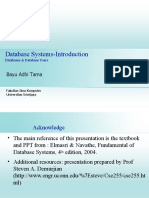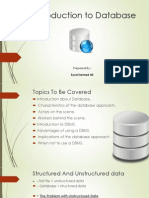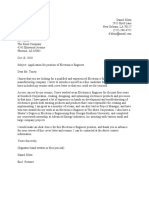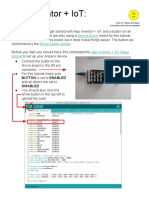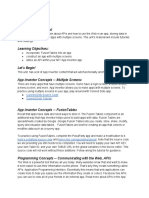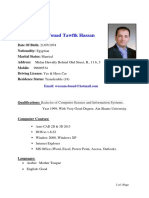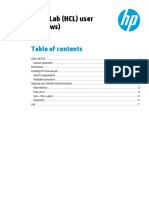0% found this document useful (0 votes)
49 views31 pagesLecture 1-1
The document outlines a course on databases, emphasizing their importance in various fields such as academia, programming, and business. It details the learning objectives, including database design, implementation, and management, as well as the advantages of using a Database Management System (DBMS) over file-based systems. Additionally, it introduces key concepts, components, and personnel involved in the DBMS environment.
Uploaded by
Hat HackersCopyright
© © All Rights Reserved
We take content rights seriously. If you suspect this is your content, claim it here.
Available Formats
Download as PDF, TXT or read online on Scribd
0% found this document useful (0 votes)
49 views31 pagesLecture 1-1
The document outlines a course on databases, emphasizing their importance in various fields such as academia, programming, and business. It details the learning objectives, including database design, implementation, and management, as well as the advantages of using a Database Management System (DBMS) over file-based systems. Additionally, it introduces key concepts, components, and personnel involved in the DBMS environment.
Uploaded by
Hat HackersCopyright
© © All Rights Reserved
We take content rights seriously. If you suspect this is your content, claim it here.
Available Formats
Download as PDF, TXT or read online on Scribd
/ 31
